The Great Sandy Adventure on Fraser Island
Whales, dingoes and Drop Bears, oh my!
“I hate that noise”, cried the 7-year-old in front of me, as another tree branch scraped past the vehicle’s long glass window; a sound akin to that of nails along a blackboard. The five Poms perched on the back seat were launched into the air again while the rest of us fastened our seatbelts and gripped whatever we could for balance. The ride through soft sand − surrounded by lush rainforest on either side − was surprisingly wild and bouncy, and we all giggled gleefully as we hit another curve in the road with speed. Our guide, Peter, had explained that in order to get through the sand, at various points, he had to take the track with some pace, but on a guarantee he is a very good driver (which indeed proved to be true) we put our faith in his expertise, sat back and indulged in the Fraser Explorer experience.
-TravelLiveLearn.com on YouTube with Sarah Blinco & Cooper Dawson
Fraser Island − situated about 300 kilometres from Brisbane; 123 kilometres in length and 22 kilometres at its widest point − was to me, that place I’d seen videos of, where 4WD vehicles race along sandy white beaches, fisherman rejoice in pristine conditions and dingoes roam through the tall old trees. It is also a location synonymous with whale watching in Spring, when mums and their new calves frolic for a while following their venture to − or birth amongst − the Great Barrier Reef and subsequent journey back down the eastern coast of Queensland towards Antarctica. Of course, I discovered on our brief sojourn in the area that all my preconceived notions were correct, but thanks to personal experience, I’ve gained a renewed interest in our local wildlife, intriguing plants and naturally beautiful landscapes.
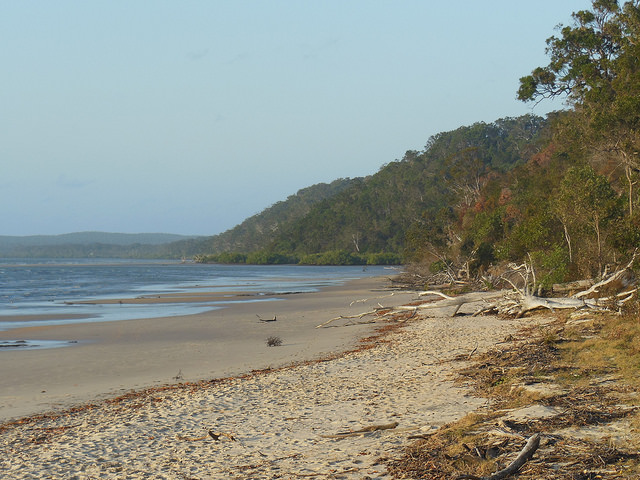
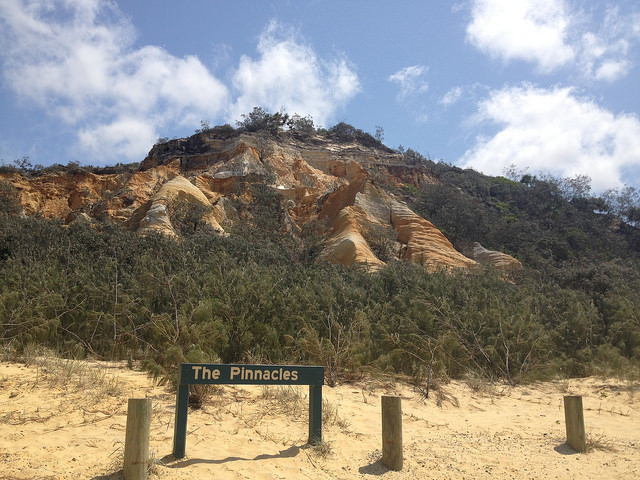
For a girl who has grown up in Queensland, I know surprisingly (perhaps shamefully) little about the bush, and I found learning about the rainforest’s unique plant and animal life here intriguing. As we travelled across Fraser Island as part of the Beauty Spots (day) Tour, I was fascinated to learn about this amazing World Heritage listed space − the largest sand island in the world, and the only one where rainforest sprouts from sand at elevations of 200 metres or more. The island’s World Heritage listing ranks it up there with Australia’s Uluru, Kakadu and the Great Barrier Reef, and its remarkable landscape is a masterpiece of long uninterrupted white beaches flanked by strikingly coloured sand cliffs, framed by azure ocean and coloured in by ancient green rainforest and crystal clear blue lakes.
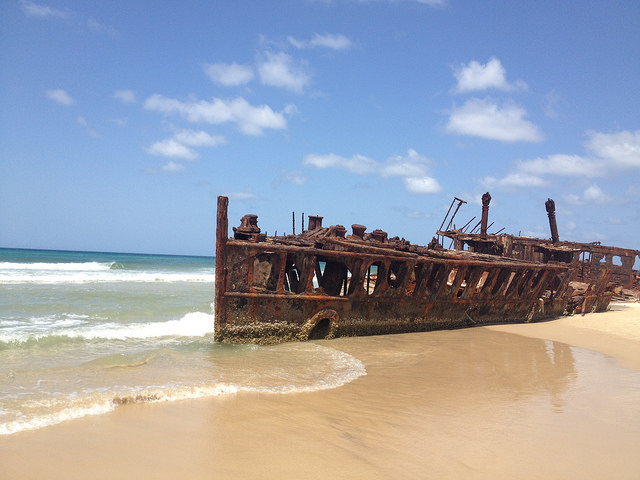
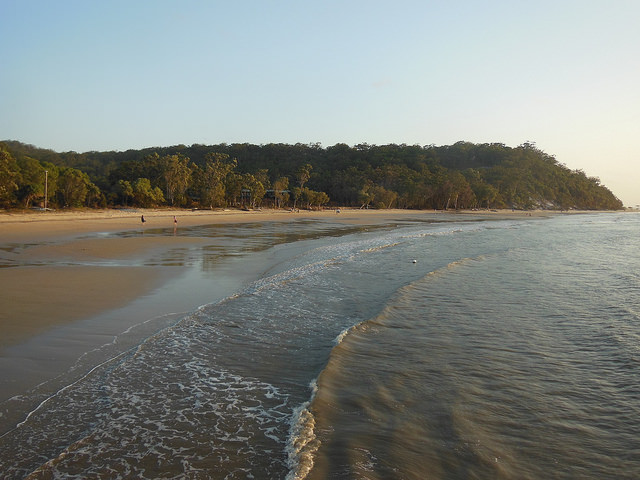
Peter our guide − also known as Peter Meyer, world-renowned photographer − openly offered us his wealth of knowledge gathered over 19 years. He told us stories of the savage 2011 bushfires that tore across this beautiful region, explaining the ramifications included the extra soft sand he was navigating, as well as where new plants were growing out of trees which is a heat-trauma reaction.
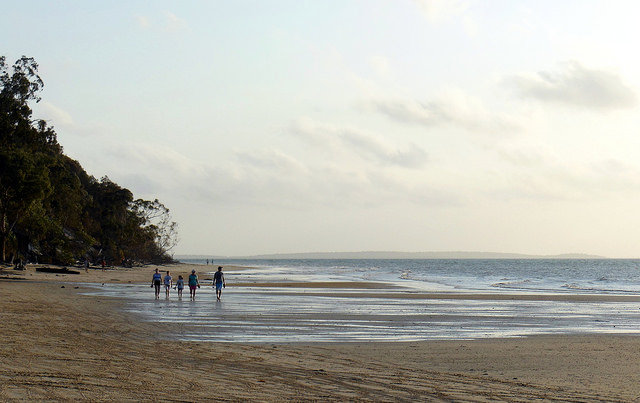
Peter pointed out native plants like Banksia (which I recognised from Mae Gibbs’ Snugglepot and Cuddlepie stories of my childhood), and showed us what happens to the plant following exposure to extreme heat; he explained how Eucalyptus trees emit a highly flammable gas, and also discussed theories as to why there are no koalas on the island, despite these Australian marsupials being common in similar terrain not too far away. Peter fondly recalled how he learns about the world through the eyes of his tour guests, and how once, a pair of Irish girls described Banksia as “hairy potatoes” or “a koala with its head tucked in”, and teased how sometimes it’s fun to see who can be convinced Drop Bears (the fictitious large evil relation to koalas, said to drop onto their prey from above) exist. Most importantly though, we learned that wombat poo comes out square. True!
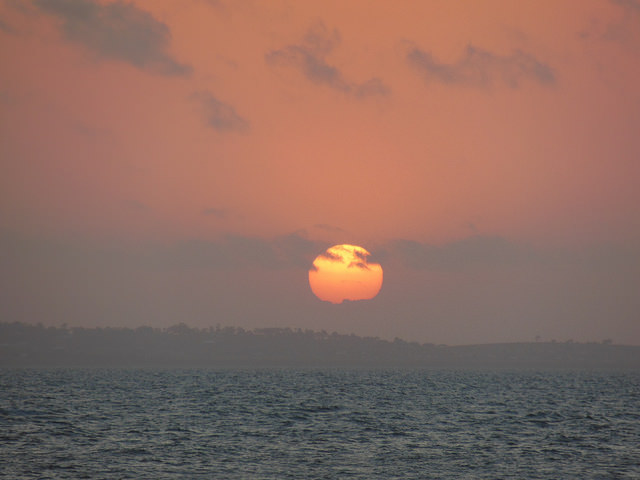
We were so enthralled by his stories we almost missed the landscape change: dense rainforest transitioning to broad sandy white beach stretching as far as the eye can see. As 4-wheel-drives whizzed past (at no more than 80km, I hope, as that’s the speed limit in these parts), we realised we’d hit the famous Seventy-Five Mile Beach, a sprawling oasis for fisherman, campers, kids and fun seekers. We stopped at Eli Creek, a freshwater stream where water pours out to sea from an inland spring at the rate of 4.2 million litres per hour, particularly popular during our visit (thanks to the school holidays) with kids on floating-tyres and European tourists enjoying a spot of revelry under the Aussie sun.
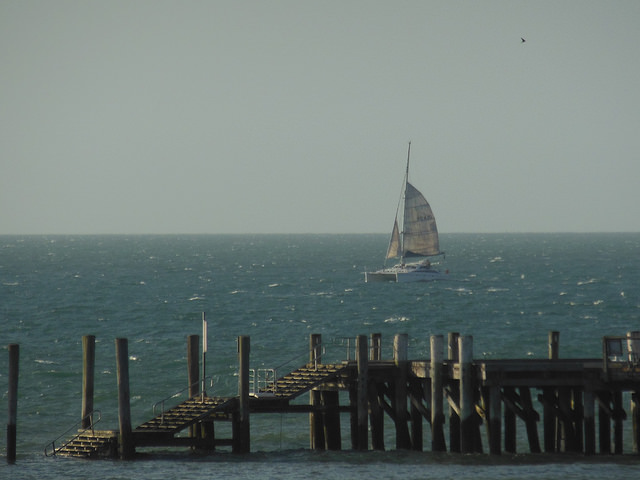
The group scoffed cookies and pastries for morning tea before venturing further along the sandy white to the Maheno shipwreck, an impressive structure that’s been beached here since 1935, and one of 23 shipwrecks recorded as having crashed upon Fraser Island’s beaches between 1850 and 1935. The Maheno was built in Scotland in 1904 and was the world’s first ever triple screw steamer, weighing a massive 5323 tonnes. Once a well-known trans-Tasman liner, as well as a hospital ship during World War 1, the ship was bought by a shipping company in Sydney after the war; later sold to Japan for spare parts. As the Japanese buyers were in the process of towing her to a new home, a powerful cyclone hit Queensland; subsequently the good old ship was separated from the vessel towing it, and ended up on its own course towards Fraser Island where it smashed onto this beach and has remained ever since. It’s a unique and thrilling site that makes for some lovely photos options (if you can hold until the tourists move out of the shot, that is).
Everyone was having a whale of a time on the tour, gradually appreciating the fact that here, there was no getting rid of sand − in your hair, shoes, clothes, bags − it’s all part of the experience. To make things even more exciting, as we cruised along the beach we noticed puffs of air emerging from the ocean followed by a massive fin splashing the water. Yep, you guessed it from the intended pun at the top of this paragraph: Majestic whales! Each year between June and November, the humpback whale migrates north from Antarctica to the warmer waters of our eastern Australian coastline. Interestingly, the term ‘humpback’ is derived from the motion these gentle giants make as they arch back out of the water in preparation for a dive. An adult usually ranges between 12 and 16 metres long and weighs around 36 tonnes, and a baby calf can weigh 700 kilograms when born. Sheesh − that’s a big baby! This area is perfect for whale watching at this time of year, although we did encounter unseasonably windy weather and our whale watching excursion has been postponed, so more on that up-close experience in a future post…
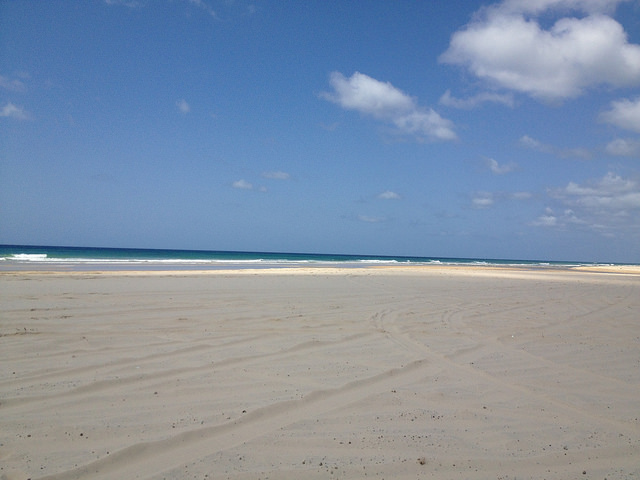
We ooh’d and ahh’d for a while before setting off for lunch. Along the way we discussed dingoes … and fate. Peter recalled how late one afternoon a tour he was leading came to an abrupt halt thanks to a flat tyre. As he went about fixing it, their party noticed four dingoes sauntering along the beach; three dingoes were stalking one little guy who obviously had ventured where he shouldn’t have been. Being an opportunist (as apparently is characteristic of dingoes), this one unfortunate soul ducked under the bus, taking shelter from the other three. This was a sight in itself, and those taking part in the tour soon forgot they had been delayed getting home. Eventually it came time to move on though, and naturally the vehicle revving to life gave the dingo a fright − so startled was he that he bolted across the sand to the shipwrecked Maheno and attempted to dive through one of the portholes. Only problem was, he got stuck! A wave came crashing through the bones of the old ship though and promptly pushed him back out, and he ran off, his ego bruised more than anything else. “A once-in-a-lifetime occurrence − that sequence of events will never happen again, and we saw it all because we had a flat,” beamed Peter.
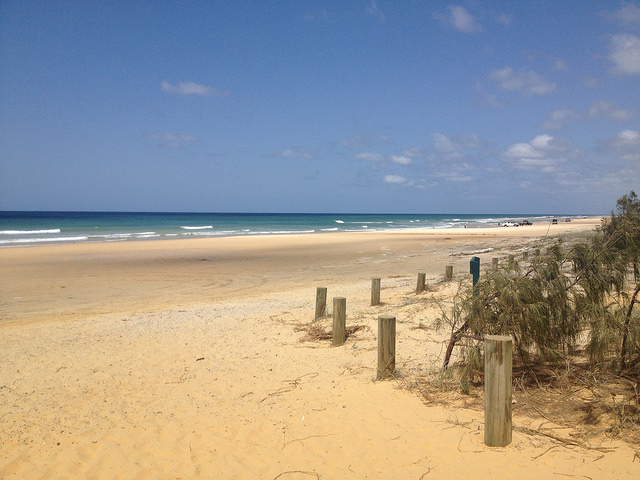
As the day moved forward we explored more of Fraser’s famous colourful sandy yellow and red-shaded landscapes, including the vast Pinnacles, discovering the whiter the sand, the older it is (a little like ageing hair). The red in the sands is essentially caused by iron that is rusting, and there’s a nice Aboriginal story I read that explains how these sands are lucky.
“Once a beautiful black maiden named Murrawar fell in love with the Rainbow who visited every evening. Burwilla, a bad man from a distant tribe, stole Murrawar for his slave wife. One day Murrawar ran away, and Burwilla followed her with his terrible killing Boomarang. She called for help and her faithful Rainbow raced across the sea. The wicked Boomerang attacked the brave Rainbow and they met with a roar like thunder. The Boomerang was killed, while the Rainbow was shattered into tiny pieces and lay on the beach. It is still there, its colours forming the hills along the beach here. Aboriginal women of many tribes, near and far, believe to obtain this sand or place it in your hair brings the Rainbow’s protection and good fortune”.
Lunch, a wander through ancient rainforest and a dip in the pure waters of Lake McKenzie capped off a truly beautiful and interesting day-tour.
Back at ‘home’ in our spacious, comfortable Kingfisher Bay Resort digs, we took a moment to recoup a little energy and enjoy the sublime bush-meets-ocean view from our veranda. We’d been urged to get to the beach by sunset to catch the dramatic mango-coloured beams of light reflect across the ocean and disappear into the night. We secured a little possie at the beachside Jetty Hut, ordered a glass of bubbles and a beer, and merrily soaked-up the spectacle; sail boats bobbed in the distance, foreign accents gossiped among us, and the segway tour group made its way back along the beach towards us as night fell.
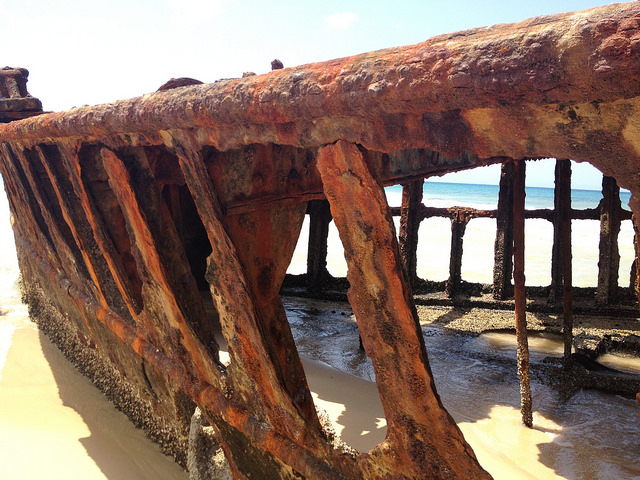
Kingfisher Bay Resort and Fraser Island is the ideal escape for those who want to get back to nature in the nicest, most comfortable way possible. The place certainly lives up to the name given to it by its original Aboriginal owners who called Fraser Island K’gari, which means ‘paradise’. The accommodation and facilities at Kingfisher Bay Resort are proudly sustainable and we thoroughly enjoyed everything about the resort.
YOUR TRIP │ OUR TIPS
Splurge
Kingfisher Natural Therapy day spa
So many relaxing ways to enjoy yourself. Why not indulge in an Holistic Massage, or a Refreshing Specialist Facial?
Souvenir
Peter Meyer is a world-renowned photographer who specialises in Fraser Island landscapes and life. His photography is on sale within the gallery in the village square. More at petermeyerphotography.com. We love his dingo on the beach series.
Tickled our fancy…
The fact that at Kingfisher Bay Resort you can choose to forgo room service for a day (or more) which in turn gives back to the environment. As a thank you for this, Kingfisher Bay Resort offers credits towards a spa treatment. Worth keeping your room clean and tidy independently, right?
Additionally, there’s a plethora of activities to entertain and inform couples, families and groups, from nature walks to guided tours; resort fun and beach/ocean activities. Read more at kingfisherbay.com/fraser-island-activities.
Eat + Drink
The most difficult part about this experience is choosing where to go. Maheno Restaurant offers a divine seafood buffet experience, while The Sand Bar provides a contemporary pub feed and great music. Seabelle Restaurant is just lovely! And you can’t go past the Jetty Bar at sunset for a cold drink, cheese or prawn platters. Then there’s the Dingo Bar for those who want to party on with other travellers (and a sprinkling of fun international guests) – it’s a hidden treasure that you can catch a free shuttle to after dark and into the wee hours.
Naturally beautiful
Whales (September and October), birds, dingoes, wildlife and a delightful, natural, sustainable experience − really, we were sad to leave Kingfisher Bay Resort, can’t wait to go back.
About Kingfisher Bay Resort
152 room resort including hotel rooms, self-contained villas and holiday homes. Gateway to World Heritage Listed Fraser Island. Read more kingfisherbay.com.
Getting there
We flew to Hervey Bay from Brisbane, transferred a few minutes up the road from the airport to River Heads, and caught a ferry across to Fraser Island. There are plenty of options however. Visit kingfisherbay.com for full details.

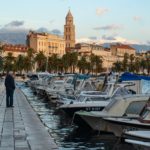
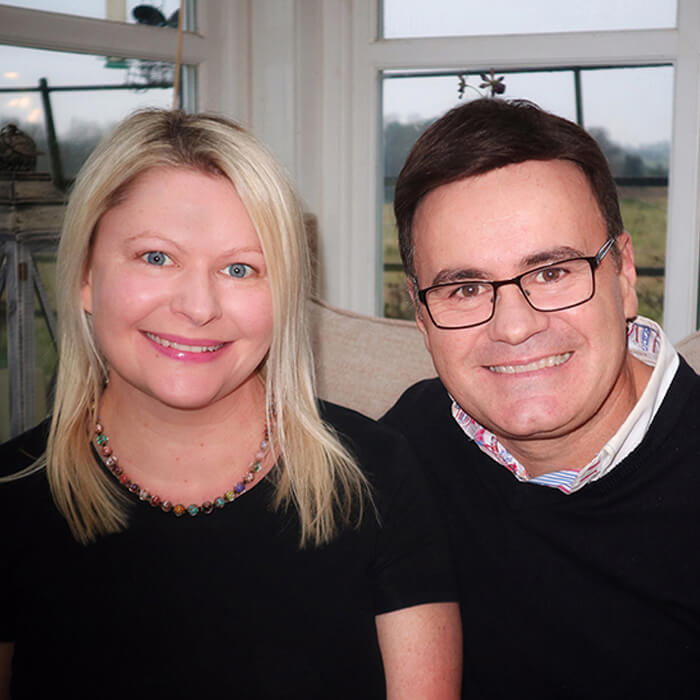
We had a fantastic time on Fraser Island and Kingfisher Bay Resort was perfect. Looking forward to heading back for a longer stay.